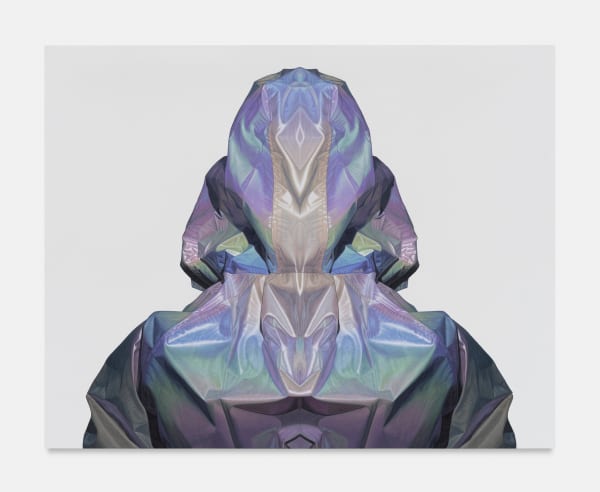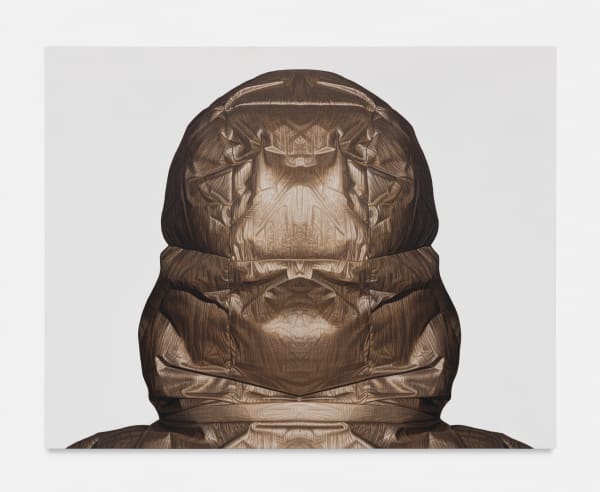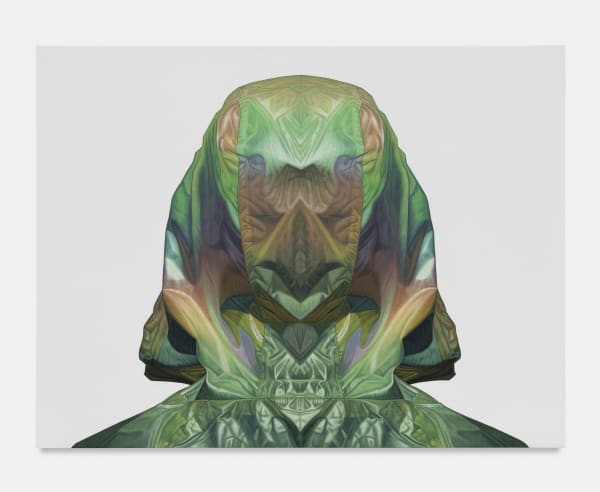KAREL FUNK: Brussels
Stems Gallery is pleased to present Winnipeg-based artist Karel Funk’s debut solo exhibition in Brussels and with the gallery, on view from 20 June to 27 July 2024.
For the past 20 years, Karel Funk has fastidiously painted hyper-realistic portraits of hooded figures turned away from the viewer’s gaze or in ¾ profile, their faces largely obscured by the garments. The artist began exploring his subject in New York City in the early 2000s, drawing inspiration both from the intimate anonymity of the urban populace and more traditional Renaissance painting techniques. Over time, the glimpses of human features and varying poses in Funk’s work have given way to a streamlined format of hooded garments depicted squarely from the back, as seen in the three human-scaled paintings presented here. Varying minutely in their cropped framing, the intricacies of the garments – their billowing topographies of folds, seams, and shadows – are amplified by the stark contrast of their flat white backgrounds. At first glance, these could appear to be masterful studies, a contemporary iteration of what audiences might have encountered in the studios of 18th-century Flemish drapery painters.
Karel Funk prefers the term ‘obsessionist’ to ‘perfectionist’ when describing his approach to working. Spending an average of three months on each composition, these paintings are charged with the intensity of the artist’s attention, which is at once a means of exercising control over one’s environment and submitting to it wholeheartedly, losing oneself in the meditative hyper-focus of rendering the kaleidoscope of shapes and colors that constitute these everyday objects. Working within strict parameters – in subject, medium, degree of detail, etc. – the choices and innovations made by the artist are minute but decisive. Their illusoriness is built incrementally: literally through the countless diaphanous layers of diluted acrylic paint that Funk applies to construct his paintings, and more generally across the twenty-year span in which he’s been exploring his subject. Despite Funk’s intense insistence on precision and reality, there is a slow creep in his oeuvre: the protective, obscuring garment slowly comes to replace the human subject. It gives way to a certain supernaturalism. Upon sustained looking, the iridescent polychromatic Gore-Tex and other slick materials in Funk’s paintings begin to almost induce hallucination: eyes and skeletal structures seem to appear, recalling the decoy mimicry of faces on the backs of butterflies and other prey.
There is a longstanding association between the symbolism of the hood and themes of obsession, paranoia, and deception, calling to mind Nicholas Roeg’s psychological horror Don’t Look Now (1973), Little Red Riding Hood, or the secret orders of robed monks. The hood is a metonym for the part of the body it cloaks and, by extension, its psychology. Yet in Funk’s case, these heightened abstractions and hallucinations are linked directly to the degree of specificity and hyperrealism in his paintings. The eerie pareidolia (facial recognition in inanimate objects) is the result of the artist photographing his ‘models’ and manipulating the results in Photoshop: mirroring one half of the composition to generate a perfectly symmetrical image that is realer than real. This, combined with the modern high-performance textiles Funk sources to paint, similarly recalls contemporary advertisements in the era of AI-generated algorithmic marketing: commodities that watch us watching them. Clocking our interest and attention, courting our innermost projections onto everyday consumer objects – the hoods start to stare back.
— Mélanie Scheiner



